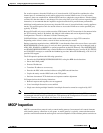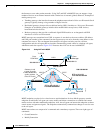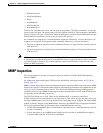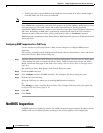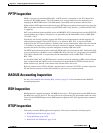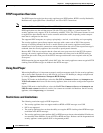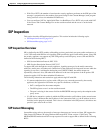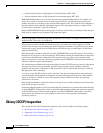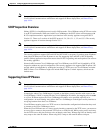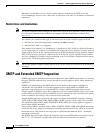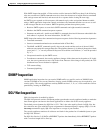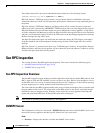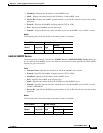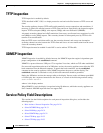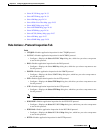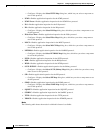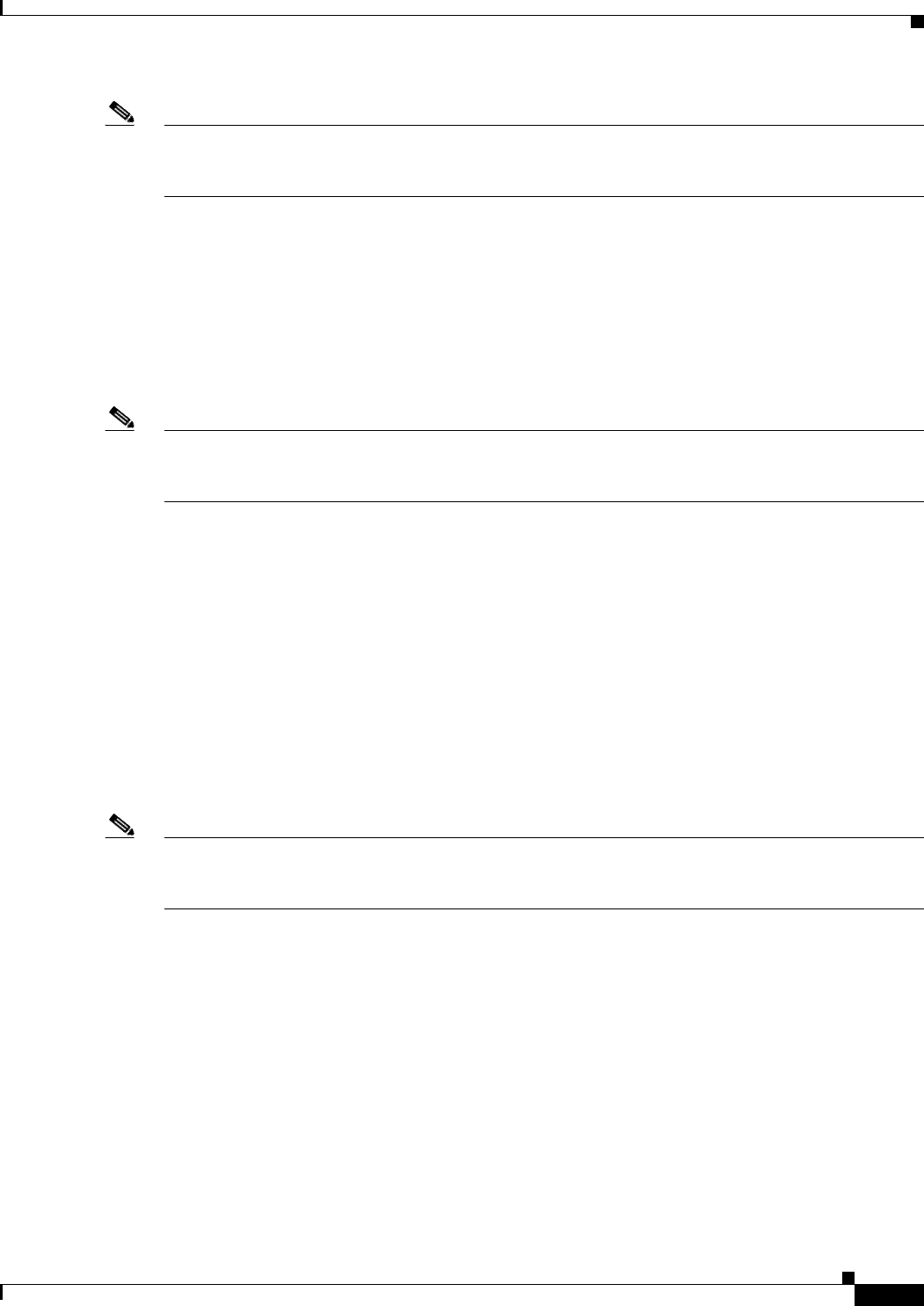
24-23
Cisco ASDM User Guide
OL-16647-01
Chapter 24 Configuring Application Layer Protocol Inspection
Skinny (SCCP) Inspection
Note For specific information about setting up the Phone Proxy on the security appliance, which is part of the
Cisco Unified Communications architecture and supports IP Phone deployment, see Phone Proxy,
page 19-24.
SCCP Inspection Overview
Skinny (SCCP) is a simplified protocol used in VoIP networks. Cisco IP Phones using SCCP can coexist
in an H.323 environment. When used with Cisco CallManager, the SCCP client can interoperate with
H.323 compliant terminals. Application layer functions in the security appliance recognize SCCP
Version 3.3. There are 5 versions of the SCCP protocol: 2.4, 3.0.4, 3.1.1, 3.2, and 3.3.2. The security
appliance supports all versions through Version 3.3.2.
Note For specific information about setting up the Phone Proxy on the security appliance, which is part of the
Cisco Unified Communications architecture and supports IP Phone deployment, see Phone Proxy,
page 19-24.
The security appliance supports PAT and NAT for SCCP. PAT is necessary if you have more IP phones
than global IP addresses for the IP phones to use. By supporting NAT and PAT of SCCP Signaling
packets, Skinny application inspection ensures that all SCCP signalling and media packets can traverse
the security appliance.
Normal traffic between Cisco CallManager and Cisco IP Phones uses SCCP and is handled by SCCP
inspection without any special configuration. The security appliance also supports DHCP options 150
and 66, which it accomplishes by sending the location of a TFTP server to Cisco IP Phones and other
DHCP clients. Cisco IP Phones might also include DHCP option 3 in their requests, which sets the
default route.
Supporting Cisco IP Phones
Note For specific information about setting up the Phone Proxy on the security appliance, which is part of the
Cisco Unified Communications architecture and supports IP Phone deployment, see Phone Proxy,
page 19-24.
In topologies where Cisco CallManager is located on the higher security interface with respect to the
Cisco IP Phones, if NAT is required for the Cisco CallManager IP address, the mapping must be static
as a Cisco IP Phone requires the Cisco CallManager IP address to be specified explicitly in its
configuration. An static identity entry allows the Cisco CallManager on the higher security interface to
accept registrations from the Cisco IP Phones.
Cisco IP Phones require access to a TFTP server to download the configuration information they need
to connect to the Cisco CallManager server.
When the Cisco IP Phones are on a lower security interface compared to the TFTP server, you must use
an access list to connect to the protected TFTP server on UDP port 69. While you do need a static entry
for the TFTP server, this does not have to be an identity static entry. When using NAT, an identity static
entry maps to the same IP address. When using PAT, it maps to the same IP address and port.



